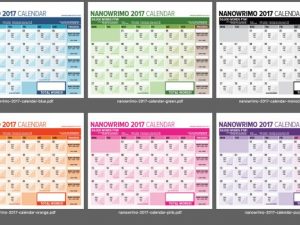(last edited on February 15, 2023 at 12:26 pm)
 Today I doodled a model of how my “motivational circuitry” works. It’s a bit silly, but I think it might be an accurate model of how my brain works. The basic idea is that I have a certain amount of “energy” that can be used to self-motivate myself on tasks when I’m working solo. This energy is used every time I have to direct myself to do a task. It might fit the experiences of people who have “ADHD Inattentive Type” patterns, if they happen to like pretending they are robots with motivational circuitry!
Today I doodled a model of how my “motivational circuitry” works. It’s a bit silly, but I think it might be an accurate model of how my brain works. The basic idea is that I have a certain amount of “energy” that can be used to self-motivate myself on tasks when I’m working solo. This energy is used every time I have to direct myself to do a task. It might fit the experiences of people who have “ADHD Inattentive Type” patterns, if they happen to like pretending they are robots with motivational circuitry!
Motivational Energy Reserves
How much fuel do I start with at the start of the day? Under normal circumstances, I have a DAILY RESERVE of about 2.5 units of “self-motivation energy”, which is used up as I tackle complicated tasks during the day. The energy reserve replenishes itself overnight if I get a full eight hours of sleep. Unused energy does not carry-over to the next day.
Basic Operation in Autonomous (Solo) Mode
When I (hereafter called a ‘Dave Unit’) start a “major task”, it always costs about one unit of energy; this is called the startup cost. It is deducted from the daily reserve. This energy is used to power my ability to discipline the Dave Unit and maintain target lock on the designated task.
To start a task, the energy reserve must have AT LEAST as much startup cost as needed for that type of task. For example, if a Dave Unit has 0.5 units of energy left at the end of the day, it can not start a new task under normal situations without overdriving the system into unproductive oscillation (see EMERGENCY BOOST later in this manual).
Each unit of energy provides around 60 minutes of running time (1 hour per energy unit). After this energy is consumed, another unit must be consumed. This limits the amount of time that a Dave Unit can be forced to do something to about 2.5 hours a day. However, there are ways to extend this productive time!
Extending Runtime Efficiency
With the nominal 2.5 units of energy available each day, 2.5 hours of “focused work” is possible before the system overheats and enters a FREE-ROAM INTERNET or NETFLIX BINGE oscillation state. At this point, the system must reset overnight (8 hour sleep) to restore the Dave Unit’s full energy reserve. However, there are ways to ‘game’ the total runtime by harnessing quirks of the Dave Unit System Architecture (DUSA).
- HYPERFOCUS DRIVE MODE – If the Dave Unit is actively curious AND/OR there are are insights to be discovered and documented, the runtime is extended for up to ten continuous hours if each discovery chains to the next in rapid succession (HYPERFOCUS JUMPING). However, there is a recovery period from 0.25 hours up to (TOTAL HYPERFOCUS TIME – 2.5HRS), whichever is greater, before the next task can be tackled in the same day (HYPERFOCUS RECOVERY COOLDOWN).
The startup cost is ALWAYS used-up when starting any task. However, it is possible to receive an energy rebate under certain conditions:
- MULTI-BENEFIT BONUS – If there are multiple benefits gained by performing a single task, the startup cost is refunded up to (N-1)/N units on completion of the task. This bonus is granted even when the multi-benefit was not foreseen at the start, but it must be recognized during the period of work.
Runtime Penalties
A Dave Unit works most efficiently when paired with a freedom- and curiosity-driven model of action. For tasks that do not naturally conform to this model (so-called yucky tasks), the startup energy cost increases as follows:
ANTI-AUTHORITARIAN PENALTY – If the task is a have to do or coerced task, the startup cost is increased by 0.75 units for a total startup cost of 1.75.
STUPID/TEDIOUS WORK PENALTY – If the task is perceived to be tedious and/or stupid, the startup cost is increased by 1.0 units per condition. A merely tedious yucky task would incur a 2.0 unit startup cost, as would a merely stupid task. A tedious AND stupid task incurs a startup cost of 3.0 units!
Penalties are cumulative! In the worst case, a yucky HAVE-TO-DO task with additional STUPID/TEDIOUS properties will have a total startup cost that exceeds the maximum DAILY RESERVE of energy and therefore are impossible to start under normal operation. This can be overcome through the application of EMERGENCY BOOST or HYPERFOCUS PRIMING (see following sections).
Additionally, the runtime efficiency for a penalized task is generally less stable:
POOR SPECIFICATION PENALTY – If the task is not simply described with clear metrics for success and subsequent application, the Dave Unit may defer execution to figure out what the hell it is supposed to do. There is an energy tax of 0.25 units applied FOR EACH INSTANCE OF CLARIFICATION regarding action, metrics, success conditions, and subsequent application of the work.
MISSING RESOURCES PENALTY – If the task is inadequately provisioned with the prerequisite knowledge, materials, and tools, the entire task’s runtime will be 50% of the normal burn rate of 60 min/unit. There is also a chance that the task will EXPLODE ON START, consuming all startup energy with no return.
In some cases, a yucky task may reduce or refund a portion of its startup cost, which can help extend the total runtime for the day. This is not predictable ahead of time.
NOT AS HORRIBLE AS BELIEVED REBATE – For tasks starting under a penalty, 50% of the penalty is refunded at the completion of the task if it was not as bad as imagined. An additional 0.25 unit bonus is granted if something unexpectedly great occurred during the task.
MULTI-BENEFIT COST REDUCTION – When operating under penalty conditions, it is possible to reduce the startup cost by calculating what “silver lining” side-benefits that can be gained BEFORE the odious work is begun. The reduction can reduce the startup cost by up to 0.25 units per bonus, depending on how legitimately awesome it is. However, the startup cost will never be less than 1 unit. Additionally, if the anticipated bonuses do not materialize, the cost reduction is invalidated and an additional 0.25 unit penalty is applied because the Dave Unit will be pretty mad.
In extraordinary circumstances it is possible to exceed the 2.5 unit daily reserve, though this will overload the system and cause extended downtime:
- EMERGENCY BOOST – As each new task has 1.0 unit startup cost, only two tasks a day can be initiated due to the nominal 2.5 unit daily reserve limit. However, additional units can be ‘borrowed from tomorrow’, reducing that day’s reserve. All penalties costs apply! After the emergency period has passed, the daily energy reserve is reduced to 0.5 units (down from 2.5 units) per day for a number of days equal up to (TOTAL BORROWED UNITS / 0.5). This makes borrowed units very expensive, as one borrowed unit equates to two days of 0.5 units maximum reserve. Such days are best used in non-directed (i.e. “playing”) activities to effect a rapid recovery to full reserve strength.
Oblique Approaches to Yucky Tasks
A quirk of the Dave Unit System Architecture allows yucky tasks to execute AFTER a closely-related non-yucky task is run. It is a form of “jump-starting” the penalty-inducing task by “blipping” the HYPERFOCUS DRIVE using a maneuver called HYPERFOCUS PRIMING.
For example, a clever DUSA operator might achieve target delivery by first engaging a HYPERFOCUS PRIMER TASK like (a) delivering something RELATED to what was requested, but is appreciably less stupid/boring or (b) is tangentially related to the onerous task and satisfies an inner curiosity. These primer tasks incur the normal startup cost.
When the PRIMER task is completed, internal resistance MAY be reduced to the point that the actual yucky task can then be started with no penalty, if HYPERFOCUS DRIVE MODE energy is now available in the system. However, the yucky task still incurs the minimum 1.0 unit startup cost unless it has transmuted into a HYPERFOCUS JUMP POINT due to a change of heart or perspective.
Unplanned versus Directed Tasks
When a Dave Unit is not MINDFULLY DIRECTED through the active use of auxiliary index cards, journaling, or other focus enhancers, it may randomly deprogram from the current task target and retrieve an UNEXPECTED BENEFIT from a DISTRACTING RABBIT HOLE. In this case, no startup cost is incurred, but the DAILY RESERVE is depleted by (NUMBER OF HOURS IN RABBIT HOLE / 2) energy units.
While this is an efficient mode of operation as far as runtime is concerned (twice as efficient as for directed tasks), the energy spent reduces what is available for directed tasks. The unexpected benefit extracted is in many cases useful at some point in the future. It just isn’t useful RIGHT NOW.
That said, a healthy Dave Unit requires a great deal of wandering time to stay in peak operating condition. While the ratio of focused/unfocused time varies depending on ambient outside temperature, it is not uncommon to see a 50/50 split between Unplanned versus Directed activity when running the unit in autonomous (solo) mode.
Group Mode Bonuses
The above rules apply to a Dave Unit operating in autonomous (solo) mode. In the different situation working in a FACE-TO-FACE GROUP CONTEXT, a Dave unit enjoys an DAILY ENERGY RESERVE BONUS of 0.5 units. Furthermore, if a Dave unit can operate PAIRED with another unit in CO-CREATION MODE, startup and penalty costs are reduced by 25%.






6 Comments
You have described me to a tee. Really love these kind of articles though they tend to be a bit of a rabbit-hole for me.
Reading this made me happy! Thank you for posting this!
Sorry if I state the obvious or if I look like a PIA here, but I’d like to point out that the human-machine analogy, despite its popularity, has a limited validity, because the working patterns of machines are linear, while those of humans, or of any living creature for that matter, are cyclical. Of course, this is not a criticism, I’ve gone through exercises of this kind myself sometimes; “all constructs are wrong – some are useful”, so…
Michael: Yah, writing the article was a rabbit hole for me itself! :D
Nacho: It’s nice that you felt the need to warn people, though I do question the “working patterns of machines are linear, living things are cyclical” statement. Rest assured that this is something that I made for fun (it’s filed under “fun things”) so it’s not intended to be an accurate model to be accepted as an absolute truth. There are SOME truths in there, though, that are worth contemplating!
This is hilarious and yet terrifying in it’s truth. I giggled so many times my roommate thought I was having some sort of seizure.
Penny: “Hilarious and terrifying” is what I strive for! :D But yah, it’s kind of scary how accurate it is for me (and apparently, I’m not alone!) I think the next phase of this will be to make some kind of infographic. I wonder what the commonality is between everyone who finds that this resonates with them? Introverted Procrastinators? INFP Procrastinators?